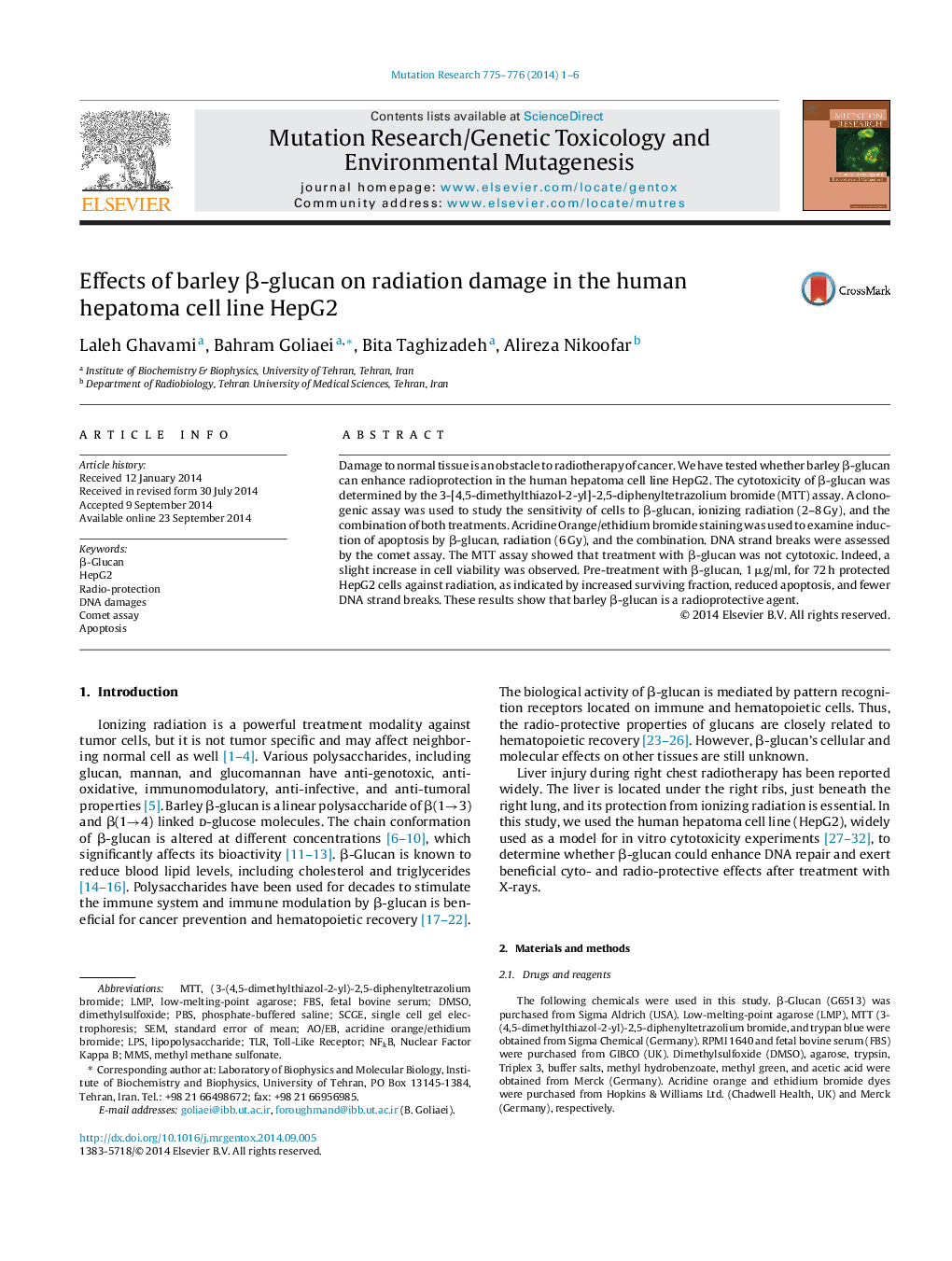| Article ID | Journal | Published Year | Pages | File Type |
|---|---|---|---|---|
| 8456442 | Mutation Research/Genetic Toxicology and Environmental Mutagenesis | 2014 | 6 Pages |
Abstract
Damage to normal tissue is an obstacle to radiotherapy of cancer. We have tested whether barley β-glucan can enhance radioprotection in the human hepatoma cell line HepG2. The cytotoxicity of β-glucan was determined by the 3-[4,5-dimethylthiazol-2-yl]-2,5-diphenyltetrazolium bromide (MTT) assay. A clonogenic assay was used to study the sensitivity of cells to β-glucan, ionizing radiation (2-8 Gy), and the combination of both treatments. Acridine Orange/ethidium bromide staining was used to examine induction of apoptosis by β-glucan, radiation (6 Gy), and the combination. DNA strand breaks were assessed by the comet assay. The MTT assay showed that treatment with β-glucan was not cytotoxic. Indeed, a slight increase in cell viability was observed. Pre-treatment with β-glucan, 1 μg/ml, for 72 h protected HepG2 cells against radiation, as indicated by increased surviving fraction, reduced apoptosis, and fewer DNA strand breaks. These results show that barley β-glucan is a radioprotective agent.
Keywords
SCGElow-melting-point agaroseRadio-protectionNFkBMMSTLRLMPHepG2FBSPBSLPS(3-(4,5-dimethylthiazol-2-yl)-2,5-diphenyltetrazolium bromideAO/EBDMSOMTTβ-glucanDNA damagesacridine orange/ethidium bromideSingle Cell Gel ElectrophoresisToll-like receptorApoptosisstandard error of meanDimethylsulfoxideComet assayfetal bovine serumnuclear factor kappa BlipopolysaccharideMethyl methane sulfonatePhosphate-buffered salineSEM
Related Topics
Life Sciences
Biochemistry, Genetics and Molecular Biology
Cancer Research
Authors
Laleh Ghavami, Bahram Goliaei, Bita Taghizadeh, Alireza Nikoofar,
